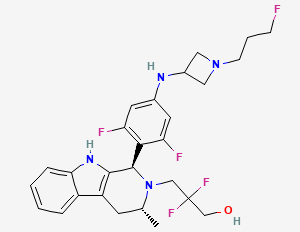
Resalis Therapeutics gets equity investment from Sanofi
Italian obesity gene therapy developer Resalis Therapeutics srl has gained an equity investment from French pharma major Sanofi SA sufficient to finance its miRNA-22 antisense blocker RES-010 through Phase II proof-of-concept.
After the Italian antisense oligonucleotide specialist Resalis Therapeutics srl started with a €10m Series A financing to bring its obesity programme RES-10 into the clinic, there is now a strategic equity investment. None other than the pharmaceutical giant Sanofi SA is investing in the clinical development of a therapy that might catalyse the conversion of white, fat-storing fat cells into brown, fat-burning fat cells, reverses fibrosis, and restores lipid and energy homeostasis by inhibiting microRNA-22 by an antisense nucleotide with low immunogenicity.
No details of the transaction and its impact on later M&A or drug licencing were disclosed. However, as the programme is to be financed up to Phase II proof-of-concept, an investment in the region of €50m to €150m can be assumed. This is the average cost of R&D, production of GMP-compliant lots, patient recruitment and evaluation of the data.
RES-010 is the first locked nucleic acid targeting miR-22(-3p), a non-coding RNA that plays a key role in the molecular pathways underlying obesity, obesity-related metastasis, metabolic associated fatty liver disease (MAFLD) and its progressive disease state, metabolic associated steatohepatitis (MASH), with an antisense mechanism. miR-22 orchestrates multiple pro-lipogenic programs modulating both direct and indirect gene targets. Genetic ablation of miR-22 has been demonstrated to favour metabolic rewiring towards higher energy expenditure and browning of white adipose tissue.
A comparison of obese and normal-weight individuals showed that miR-22-3p was significantly overexpressed in obese human adipose tissue (p-value: 0.0078; q-value: 0.0373). Its expression also correlated positively with different anthropometric and metabolic characteristics, such as waist–hip ratio, body-mass index, serum triglycerides, serum ApoB, HOMAIR, serum alanine aminotransferase and serum C-reactive protein. Furthermore, miR-22-3p levels correlated negatively with muscle mass, serum adiponectin and serum HDL cholesterol, and several metabolic pathways were predicted to be under the control of miR-22, indicating that the role of miR-22 in metabolic homeostasis is conserved in mice and humans.
Thus compared to current peptidic GLP-1 modulators and second- and third generation modulators of appetite marketed by Novo Nordisk, Eli Lilly, and developed by pharma giants including Roche, AstraZeneca, Boehringer Ingelheim, and much more , LNA-based miRNA-22 blockers do not affect muscle mass decrease, normally seen in unspecific central regulators of appetite. Furthermore, they need not to be taken lifelong and open up a more causal treatment of metabolic diseases. Third, as RNA synthesis is both programmable and costly, it may theoretically reduce the cost of current biological therapies.
According to Alessandro Toniolo, CEO of Resalis Therapeutics, the company is preparing enrolment of patients for a Phase I clinical trial in which the safety and therapeutic window of RES-010 will be assessed. He said, that there is a lot of robust data that may allow rapid progression to Phase II development when RES-010 will pass Phase I studies without problems. A GalNac-modified miRNA-22 backup programme dubbed RES-20 is in early preclinical stage at Resalis.



 Momoneymoproblemz - wikimedia
Momoneymoproblemz - wikimedia PubChem
PubChem